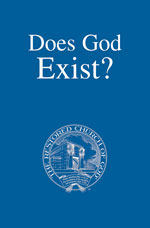 stock.adobe.com
stock.adobe.com
Article
A century after the infamous Scopes trial, the battle about where life really came from rages on. What is the truth?
Learn the why behind the headlines.
Subscribe to the Real Truth for FREE news and analysis.
Subscribe NowA colossal replica of the biblical Noah’s Ark rises majestically from the countryside of northern Kentucky. It stretches one and a half football fields long, holding three massive decks with wooden cages, food-storage urns, life-size animal models and other exhibits.
The structure was designed to show that the biblical story was literally true. And with that, Ken Ham, the organizer behind the Ark Encounter theme park and related attractions like the Creation Museum, furthers his goal to assert the biblical Book of Genesis should be interpreted as follows: Humans were created by God on the sixth day of Creation on an Earth that is only 6,000 years old. Exhibits picturing dinosaurs aboard Noah’s Ark and other displays reflect widely held creationist views.
Mr. Ham and other leading creationists want to succeed where they believe William Jennings Bryan failed. Bryan, a populist politician and fundamentalist Christian champion, helped the prosecution in the famous Scopes Monkey Trial, which took place 100 years ago this July in Dayton, Tennessee.
Bryan’s side won in court—leading to the conviction of public schoolteacher John Scopes for violating state law against teaching human evolution. But Bryan was widely seen as suffering a humiliating defeat in public opinion, with his sputtering attempts to explain the Bible’s spectacular miracles and enigmas.
“It showed people around the world that Christians don’t really believe the Bible—they can’t answer questions to defend the Christian faith,” Mr. Ham said. “We want you to know that we’ve got answers.”
Yet the teachings of Mr. Ham and other creationist organizations defy the consensus of modern scientists—that the Earth developed over billions of years in “deep time” and that humans and other living things evolved over millions of years from earlier species.
Leading science organizations say it is crucial to teach evolution and old-Earth geology. Evolution is “one of the most securely established of scientific facts,” says the National Academy of Sciences. The Geological Society of America similarly states: “Evolution and the directly related concept of deep time are essential parts of science curricula.”
What does the public believe? Polls generally show that somewhere between 1 in 6 and 1 in 3 Americans hold beliefs consistent with creationism, depending on how the question is asked. A 2024 Gallup poll found that 37 percent of U.S. adults agreed “God created human beings pretty much in their present form at one time within the last 10,000 years or so.”
What makes the creation versus evolution debate even more confusing is that many religious groups accommodate a belief in evolution. Gallup’s survey found that of Americans who believe it, more say evolution happened with God’s guidance (34 percent) than without it (24 percent). Catholic popes have shown openness to evolution while insisting the human soul is a divine creation. Many liberal Protestants and even some evangelicals have accepted at least parts of evolutionary theory.
To get to the truth about where life came from and when, you must rise above the never-ending debate. A closer look at Genesis shows it does not require a young-earth interpretation, contrary to what many assume. And when this is correctly understood, it is not incompatible with science.
What Scripture Really Says About the Earth’s Age
Most creationists say the Earth is 6,000 years old. Their argument is that, if one reads Genesis 1 literally, it describes a creation that took place over a seven-day week, culminating in the creation of Adam and Eve, and this occurred six millennia ago. This contradicts the scientific consensus that the planet is considerably older.
The desire to interpret the Bible literally is not wrong. But some verses require careful scrutiny to know what they really mean. Verses 1 and 2 of Genesis 1 are commonly misunderstood.
Verse 1 says, “In the beginning God created the heaven and the earth.” People do correctly see that this describes God literally creating heaven and Earth. The next verse is where confusion enters.
Verse 2 says: “And the earth was without form, and void; and darkness was upon the face of the deep. And the Spirit of God moved upon the face of the waters.”
It appears that this immediately follows what God did in verse 1. But looking at the original Hebrew reveals that these two verses do not neatly fit within a seven-day week.
The Hebrew word translated “without form” means to lie waste, a desolation, a worthless thing, confusion, empty place. Similarly, “void” comes from a Hebrew word that means emptiness, void, waste.
Why would God create a planet that is worthless and desolate?
Isaiah 45:18 shows this is not what happened: “For thus says the Lord that created the heavens; God Himself that formed the earth and made it; He has established it, He created it not in vain, He formed it to be inhabited…”
The word translated “in vain” here is the same Hebrew word translated “without form” in Genesis 1:2. This verse proves that God did not create Earth in that state. Rather than verse 2 immediately following verse 1 in time sequence, a long period of time actually transpired between the two verses.
Since God did not create the world in an empty, desolate state, something else had to happen to put the planet in that state.
The meaning of another Hebrew word adds to the story. Look back at the statement that “the earth was without form, and void.” The word “was” here can mean become or come to pass. Earth was not created that way—it became that way.
Ezekiel 28 and Isaiah 14 show it was the rebellion of Lucifer, later renamed Satan, along with one-third of the angels, that put Earth in a desolate condition. Jesus Christ referenced this in Luke 10:18 when He told the disciples, “I beheld Satan as lightning fall from heaven.” While we do not have space here to tell the whole story, read our free booklet Who Is the Devil? for more.
Let’s summarize the timeline. First, God created the heaven and Earth (Gen. 1:1). Then, a long period of time passed before verse 2, during which Earth became desolate. What followed in the Creation Week was a re-creation—restoring the beauty and order that had existed before.
This re-creation did take place about 6,000 years ago. It took place over a seven-day week, culminating in the creation of man, after which God rested on the seventh-day Sabbath.
This period between the original creation and the re-creation accounts for the Earth’s fossil record, including the existence of dinosaurs and other ancient species. These creatures lived and died long before the creation of man, during the pre-Adamic world. Their fossils remain as physical evidence of that earlier time. This means they were not passengers on Noah’s Ark, as some claim, but part of the Earth’s history long before God created humanity.
In short, the Bible leaves room for an ancient Earth while clearly establishing God as the Creator of life.
Evolution Also Gets It Wrong
While most popular creationist organizations get the timing of Earth’s creation wrong, many evolutionists are wrong in believing that no God was involved in the origin of human life at all. They believe life evolved over time without a Creator. While evolutionists generally get the age of the planet right, the belief that life sprang from non-life, without design or direction, is false.
Of course, neither side is a monolith. Some creationists do accept an old Earth, and some scientists accept intelligent design in some form.
The Real Truth magazine is published by The Restored Church of God. It is primarily written to an audience that believes in God and has an open mind toward the Bible and its teachings. Therefore, it is not our purpose here to exhaustively debunk evolution as the origin of life. For a thorough explanation, see our free brochure Evolution – Facts, Fallacies and Implications.
As we saw earlier, even many believers wrestle with whether evolution occurred but was guided by God. This is known as theistic evolution.
Proponents do think God exists and is the source of life on Earth, but that the accounts in Genesis are not to be taken literally and that God could have directed the evolutionary process to create everything.
This can sound reasonable, but it is just as wrong as an atheistic belief in evolution. Theistic evolution requires someone to believe God exists but that His Word in the Old Testament is false. These positions are incompatible.
Proverbs 30:5 says “every word of God is pure.” The pure words of Genesis cannot be dismissed as a metaphor. Adam, the first man, is mentioned in Jesus Christ’s genealogy in Luke 3:38, and Paul referred to Adam and Eve as real, literal people in I Corinthians 15:22 and I Timothy 2:13, among other verses. If someone does not believe the Genesis account and thinks man gradually evolved from apes, they do not believe God.
A caveat: Although evolution was not the process God used to make all things, this does not mean Christians cannot acknowledge microevolution, which describes smaller changes within species over time. The problem is believing macroevolution, or evolution that results in large and complex changes, including species formation.
Psalm 33:9 shows that God gave specific instructions when creating all things: “He spoke, and it was done; He commanded, and it stood fast.” Nature’s design, order and complexity point to a Designer, not randomness.
How the Bible and Science Can Work Together
A man visiting the Ark Encounter from Mesa, Arizona, said the exhibit helped him appreciate “the opportunities God gives us to live the life we have, and hopefully make good choices and repent when we need to.”
“I think,” he added, “God and science can go hand in hand.”
How can the Bible and science work together?
We have already seen the Bible does not contradict the scientific reckoning of the age of the planet. Beyond this, Scripture supports scientific discovery more broadly. For example, there are many Bible verses that reveal things about the natural world that man did not discover on his own until thousands of years after God recorded them.
For example, Job 26:7 shows the Earth “hangs...upon nothing.” Only much later did scientists understand the planet’s position in space and the forces at work to keep it in a position to support humans. Leviticus 17:11 shows that life is in the blood. Medical science did not understand this until the 1600s, and prior to that time, many patients’ lives were unnecessarily lost due to the practice of bloodletting. The Psalms speak of ocean currents, which man later observed and documented scientifically. Many other verses could be cited.
A Christian would never dismiss science found in the pages of the Bible. But one who obeys God should also not reject science that is not directly found in the Bible. Scripture is the foundation of knowledge, but it does not contain all knowledge. There are many discoveries man has made that are not found in God’s Word, yet are valid and legitimate observations.
The problem for a believer is “science” that people present as contradicting or invalidating belief in God or His Word. Some of what is presented as science is really a mix of truth and error, fueled by assumptions and human reasoning.
This is what Paul meant by “oppositions of science falsely so called” (I Tim. 6:20). He was not dismissing real science—he warned against false arguments parading as science.
God wants people to embrace all forms of right knowledge. Proverbs 18:15 says, “The heart of the prudent gets knowledge; and the ear of the wise seeks knowledge.”
But you must use good judgment and carefully evaluate what is presented to you. Be one of those who, as Hebrews 5:14 says, “by reason of use have their senses exercised to discern both good and evil.”
God’s Purpose
The Bible reveals not only the Creator of life, but also a framework for Earth’s history that can stand alongside scientific discovery. And, once you understand where life came from, this opens the door to a much deeper question: Why are we here?
A person’s beliefs about human origins shape their morality and identity—and greatly inform the purpose they see for life. False ideas, including a young Earth and evolutionary theory, obscure the true understanding God wants you to have.
Romans 1:20 says, “The invisible things of Him from the creation of the world are clearly seen, being understood by the things that are made…” God has made the evidence plain. Creation points to a Creator. Design points to a Designer. And the Bible, when rightly understood, offers a logical and inspiring explanation for it all.
If you have never taken the time to prove that God exists or that the Bible is His Word, now is the time. God Himself says, “Prove Me now…” (Mal. 3:10). He wants you to seek answers and has made sure you can find them.
King David once looked at the stars and asked, “What is man, that You are mindful of him?” (Psa. 8:4). It is a question we all must answer.
God’s Word does not just explain how we got here. It reveals why. You were made for a purpose, and the Creator of life wants you to discover it.
To learn more, read our free booklets Does God Exist? and Why Do You Exist?
This article contains information from The Associated Press.



